By Tony DiBernardo
Master’s Graduate, Space Studies
and S.E. Guthrie
Master’s Student, Space Studies
Note: This article is part 2 of a two-part series of the American Public University System Analog Research Group (AARG) recent mission at the Mars Desert Research Station (MDRS) in Utah.
In late January 2023, the American Public University System Analog Research Group (AARG) completed its first analog astronaut mission (ARG-1M) at the Mars Desert Research Station (MDRS). This article contains personal accounts from the other members of our ARG-1M crew, reflecting on their experience during their two-week mission. These members were:
- William “Titan” O’Hara, Habitat Specialist and AARG Faculty Advisor
- Tony “Iron Man” DiBernardo, Mission Journalist
- S.E. “Ceres” Guthrie, Mission Commander
Bill O’Hara: The MDRS Terrain Is Desolate and Impressive
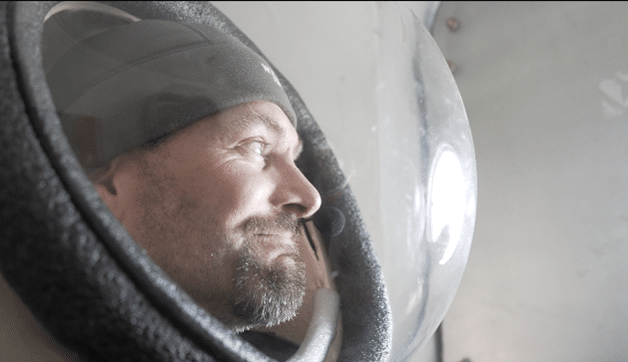
I had heard about MDRS for a number of years and was always curious about the realism and operation of this analog habitat. I was also curious about what it would be like to work with The Mars Society on an analog mission.
Previously, I participated in four missions at four different analog facilities. I have also developed habitat concepts and evaluations as part of my professional work in the human spaceflight industry.
I spent a number of years as an International Space Station (ISS) flight controller and crew instructor before eventually moving into private industry. Even with all that experience, I wanted to approach MDRS with an open mind as part of my case study of habitat architecture.

Just driving up the MDRS facility was impressive. The landscape is beautiful, desolate and remote. I could immediately see the appeal in placing a Mars analog research station in this part of the country.
As you’re approaching the facility, the complex suddenly appears, a bright white set of oddly shaped buildings against the flowing brown landscape. It looked every bit like what you might imagine a habitat on Mars should look like. For a longtime Moon and Mars advocate and geology nerd, it was an amazing first impression.
There is something exhilarating about separating yourself from the rest of the world and dedicating your complete attention to a defined mission and team. Living in the MDRS habitat created a great sense of routine and goal-oriented camaraderie.
It’s easy to imagine yourself on the Moon or Mars as you go about your day navigating between levels of the habitat’s module or passing through the tunnels to other modules. However, it does take some effort because the tunnels are not completely closed, and you can’t help but pause occasionally to enjoy the beautiful day.
That is one unfortunate characteristic of the habitat complex. You can’t exactly stay 100% confined when you can take in the warm sun and the fresh air as you move about.
One more takeaway from this mission had to do with our relationship with mission support, what the Mars Society calls their mission control. We had a challenge in reaching a harmonious relationship with mission support representatives, although it did stabilize in the last half of the mission.
I think there are some improvements that can be made by studying International Space Station operations regarding the dynamics of long-duration, long-distance mission operations and carefully extrapolating that knowledge to Mars mission scenarios. Both mission control and space crews are under various physiological and psychological stress, and an unhealthy mission control/crew relationship will only lead to new stressors that are dangerous to mission success.
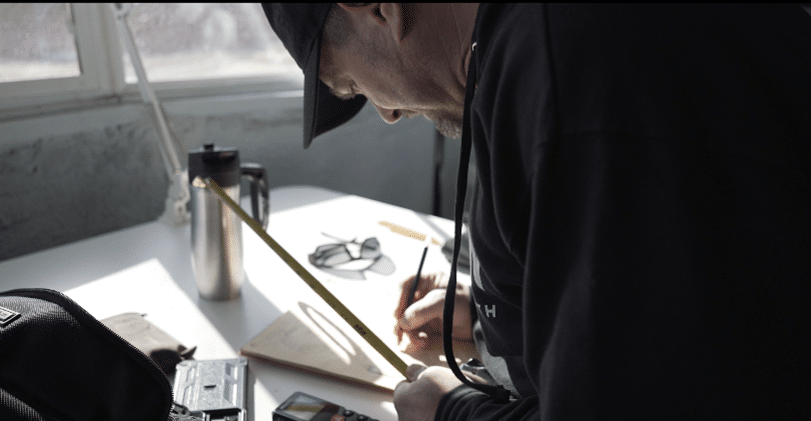
One of my favorite parts of the mission was the time spent on extravehicular activities (EVAs). The topography of the region around the MDRS habitat is impressive and undeniably reminiscent of Mars. It was beautiful and inspiring to behold.
I enjoyed the sunrises and sunsets, when the rocky hills, ridges, and gullies were lit with otherworldly shades and colors. The simulated EVA suits worked well for our tasks and gave us some sense of their limited field of view, bulkiness and added mass. These are good characteristics when you want a taste of what real astronauts will experience on the Moon or Mars.
Overall, it was a fun mission and a great experience at MDRS. I can appreciate how much work goes into building and operating an analog station, and I enjoyed my two weeks in simulation.
Tony DiBernardo: The MDRS Experience Was ‘Fruitful Beyond Measure’
My experience at MDRS was fruitful beyond measure, considering how little time I had to prepare. I found out just two weeks before the mission that I was selected to fill the spot of a student who had dropped out. When I got the news, I felt like I had won the lottery.
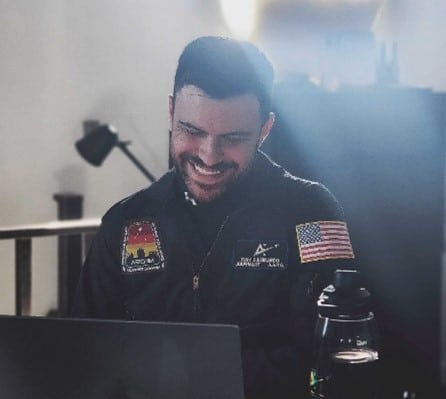
I practice science communication and pursue my education in my free time, so being able to fill the role as the crew’s journalist was a godsend for both me and the crew. My only mandatory duties, per MDRS’s guidelines, were to submit daily logs detailing the mission’s progress.
But we transformed my role into so much more. During the two weeks of the mission, I collected over one terabyte of video footage of our crew and the simulated Martian landscape.
Our always-running cameras captured various activities, such as:
- Watering our plants in the greenhouse
- Saving our Kinetic Utilization Resource Tool (KURT) during a simulated rescue mission
- Testing supply cache technologies
- Analyzing and processing astronomical data and images
- Taking detailed observations of radiation effects and plant growth
- Recording our criticism of the habitat’s design
- Participating in stress reduction via focused breathing
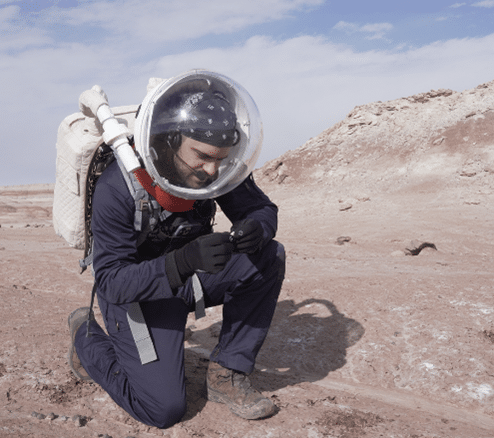
One of my favorite parts of the mission was the continuation of the National Aeronautics and Space Administration (NASA)’s wakeup song tradition. Before the mission, we reached out to families asking them to send a wakeup song and a personal message to be played for the crew each morning.
All of us missed our families dearly so waking up to hear their voices really started us off on the right foot each day. Each night, I collected all of the video footage from the day, edited it into a video log, and overlaid it with the audio from that day’s wakeup song and message. To see our entire mission transformed into a product that we can experience again and share with our families truly made my role in the crew feel more significant each day.

In reflecting on the MDRS mission, I feel a sense of family, accomplishment, and adventure that was full of firsts. I saw the Milky Way for the first time. Coming from a communications background and never thinking, I had the brains to study space in my youth, being able to conduct real research and record findings that supported our hypotheses was exhilarating.
I am also relatively new to videography, and I got what some would consider a once-in-a-lifetime chance. I documented an analog research crew’s activity for two weeks in a simulated Mars environment and compiled my footage into a unique documentary.
We put on spacesuits and traversed simulated Martian terrain; we ate dehydrated foods and took few to no showers. Also, we hosted a live-streamed media day with over 300 global participants, and we lucked out on having the best, most cohesive crew you could ask for.

Overall, the most inspiring part of the mission was its importance. Even though MDRS may lack the key features to create a truly analog environment, being in the south Utah desert really put us in the shoes of future explorers who will work to create a sustainable human presence on Mars.
They will look back on the research that we and others have done and use it as a starting point. When you are on such a mission, the idea that you will aid future astronauts in space exploration really keeps you going. Even while you miss your family, real food, showers, privacy, pets and the comforts of home, going through those privations felt like nothing compared to our contribution to the future of human exploration.
S.E. Guthrie: After a 2-Year Wait, We Finally Made It to MDRS
The road leading to the analog habitat at the Mars Desert Research Station had many highs and lows, but all great journeys have paths that challenge you. MDRS is nestled within the rolling hills and buttes of the Utah desert. It is everything you would expect if you were air-dropped onto Mars.

It’s barren, dusty and isolated – the feeling is surreal. For an aspiring astronaut, it is one of the closest experiences you may have to being on another planet. But like all space travel, getting there is anything but easy.
Arriving at the facility was befitting to the tribulations we endured on the way there. MDRS is off the beaten path; our road was filled with hills and drops. The road is also rocky and uneven, and there are moments that you fear you may bottom out.
But upon arrival, you are immersed in another world that closely simulates what it’s like to be off planet. We jumped out of our still-running vehicles and left the doors wide open as we rushed to a rickety wooden sign painted “Mars Desert Research Station.” The sign is marked with rocks and no-entry warnings to trespassers.
We posed in front of the sign for our first crew photo, holding each other close and shedding a discreet tear under our sunglasses. After three days of traveling and two years of waiting, we had finally made it to MDRS.
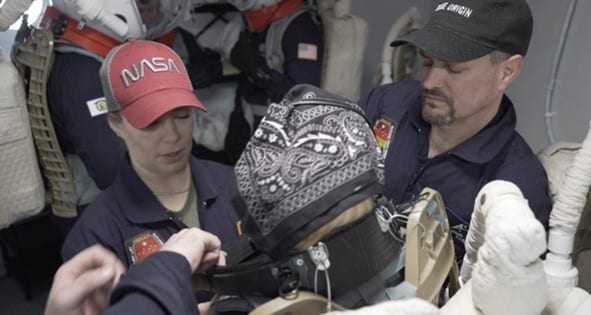
For two weeks, our crew worked tirelessly to accomplish their individual research projects. However, the analog experience, like any mission in space, never goes exactly as planned. There were many late nights filled with disappointment and frustration.
EVA plans were rewritten and reorganized. Observatories break down and data is lost. Software fails and precious images are. Also, seeds never germinate, a camera doesn’t record, and yes, even the toilet fails.
Every morning, we huddled around a table for coffee and oatmeal, listening to messages from home submitted by our loved ones. We discussed EVA requests and projects as a team, strategizing objectives versus constraints.
We spent many late nights planning, writing and persevering through another tough Sol (Martian day). But even from my quarters, even with my door closed to concentrate on writing reports late into the night, I heard laughter all throughout the main deck. There was always laughter.
As the two weeks went on, we accomplished everything we came to MDRS to do. We performed study after study, took 400,000 images, and engaged with the public and school-age children. We tirelessly recorded every moment, wrote 105 reports and saved KURT eight times.
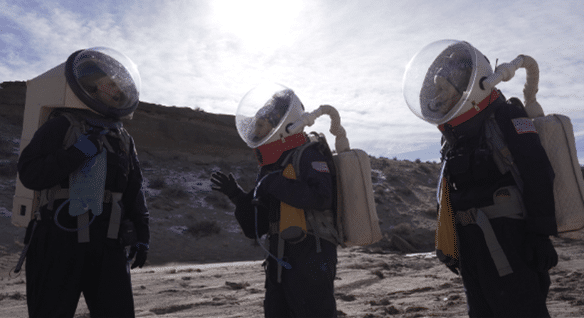
We worked 18-hour days, ending them with a card game or maybe 20 minutes of a movie. We also stared up at the magnificent night sky through the cupola, unbothered by the desert cold and mesmerized by our place in our own Milky Way galaxy.
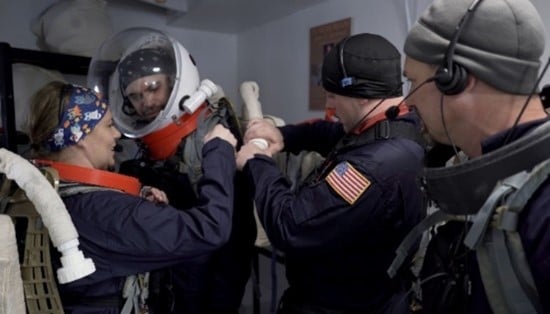
The analog experience is a human experience. Spaceflight pushes humanity to its limits, but it is always centered around people. Both the analog research experience and spaceflight bring forth the very best in people who remain passionate about space.
As Mission Commander, I had the great honor and privilege to serve this crew and accomplish great things for humanity. While the mission was not without its struggles at times, our crew seized each moment as an opportunity to rise above defeat with strength, compassion and creativity. I have no doubt that the achievements of our crew will empower our efforts to reach the Moon, Mars and other worlds.
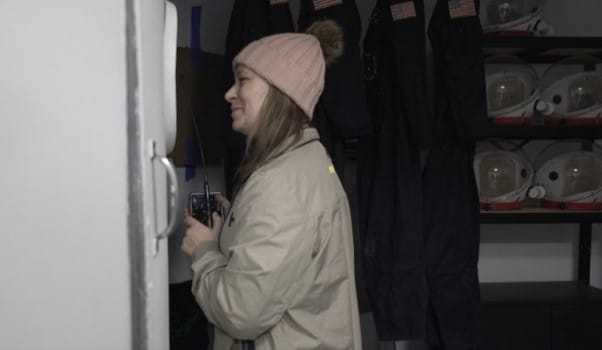
With sincere gratitude, I express my thanks to the MDRS crew for your dedication and tireless efforts throughout this mission. Additional thanks go to:
- Flight Director Terry Trevino for always advocating for the crew’s welfare
- Faculty Advisor Dr. Kristen Miller and AARG Program Manager
- Scott Van Hoy for providing us with the opportunity to work at this outstanding facility and have this amazing experience.
- Our families, friends, colleagues, mentors, supporters and many stakeholders, who remind us that no achievement is accomplished alone
Thank you for enduring this journey with us and never wavering in your support.
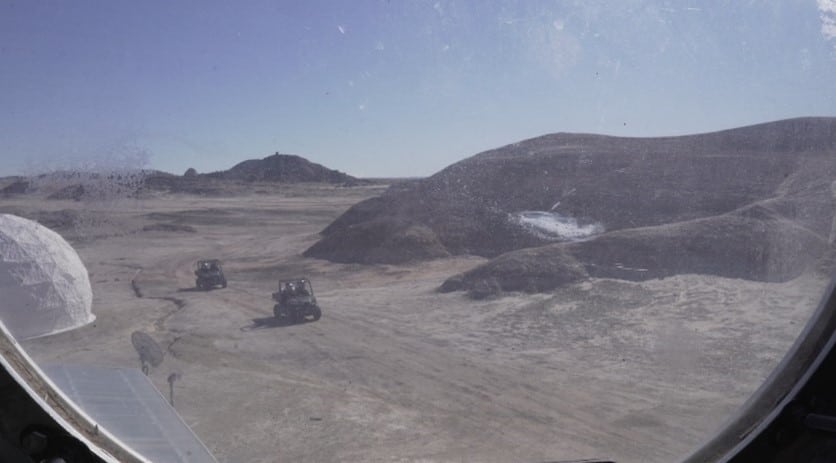
More Information about AARG
To read more about AARG, please visit our website or email AARG at apus.arg@gmail.com. Our website has:
- Publications about past and current missions
- The ARG-1M’s Mission Summary and Research Summary
- Daily reports
- Photos and videos
Watch the MDRS Video
About the Authors
Tony DiBernardo is a graduate of American Public University, recently completing his master’s in space studies. He holds a bachelor of arts in communications and a certificate in science communication from Northwestern University.
Currently, Tony is the Communications Officer for AARG and served on crew ARG-1M as the crew journalist. His work has resulted in a full-length documentary covering this mission, “Analog: A Documentary of the ARG-1M Analog Mars Mission.” His current endeavors include utilizing new forms of media to discover the most effective ways to bring science to the young generations.
S.E. Guthrie is a current graduate student with American Military University working toward her master’s in space studies with a concentration in astronomy. She holds a bachelor of science in aerospace sciences and a certificate in military leadership studies from American Military University, an associate of science in aerospace technology and an associate of science in paralegal studies from the Community College of the Air Force.
Currently, she is an active member of the AARG, serving as the programs’ Recruitment Coordinator. S.E. has served on three analog missions as a Mission Specialist and Mission Commander. Additionally, she is the principal investigator and co-investigator on several active projects which include contingency EVAs; mobility and modular devices for spacesuits, plant growth, and radiation exposure on Martian surface; and communication signals enhancement in reduced gravity for deaf individuals.

Comments are closed.